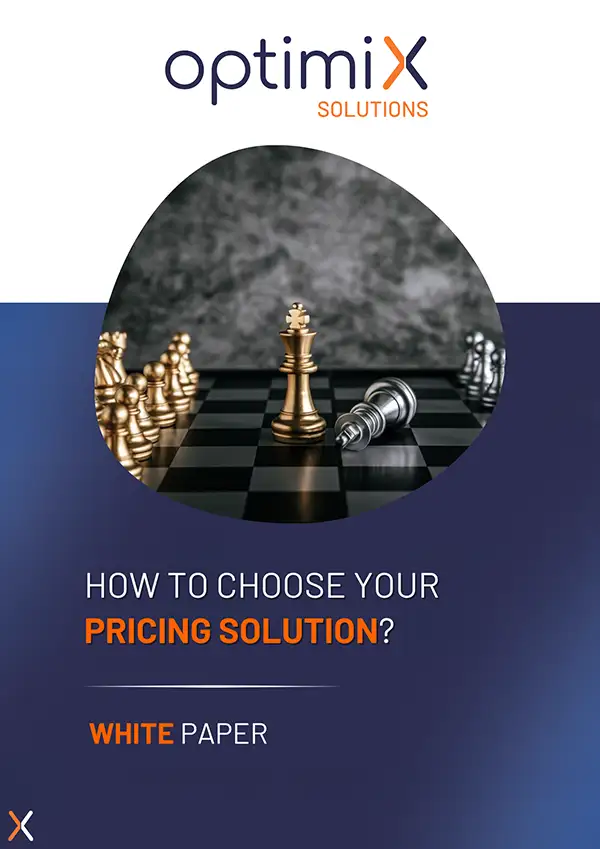When it comes to driving business success, pricing is everything. A well-chosen pricing solution doesn’t just impact revenue — it can define a company’s future. Yet, with so many options available, finding the right pricing tool requires careful thought. It’s essential to assess your business’s unique needs and thoroughly evaluate potential solutions before making a decision.
Pricing solutions empower companies to create, manage, and adjust their pricing strategies across diverse products and services. They offer flexibility, allowing businesses to tailor prices for specific customers, provide discounts, and adjust to market demands. This flexibility can be a game-changer for staying competitive in today’s fast-paced markets.
In this guide, we’ll walk you through 5 key steps to help you select the ideal pricing solution. Whether you’re a startup looking to get your pricing right from the start or an established company seeking a fresh approach, the right tool can make all the difference.
So, let’s start — beginning with understanding exactly what your business needs from a pricing solution.
Step 1 : Understand Your Business Needs
Before you can select a pricing solution, you need to understand your business needs. Consider what features and functionalities you need and how they will help you achieve your business goals.
Determine your pricing objectives
Considerations when choosing a pricing solution involve understanding your objectives. While profitability is a primary objective, other factors like market position, competitor positioning, and demand dynamics also influence pricing decisions.
Know your customers
Think about how customers interact with your pricing and what kind of experience they should have. How much have they been willing to pay for products and services ? Have any changes in price discouraged or boosted sales ?
Identify any potential challenges
Anticipate any obstacles or difficulties that may arise, such as market competition, customer resistance to price changes, or complexities associated with implementing a new pricing solution. By addressing these challenges proactively, you can develop a robust pricing strategy that aligns with your business goals. To learn more about boosting your pricing strategies, explore our pricing solution, Optimix XPA, a versatile and customizable software suite designed for the retail industry.
Having identified your key needs, create a criteria list for further comparing and selecting the best Pricing solution. This clarity ensures that your choice aligns with your requirements, avoiding any mismatches.
Step 2 : Consider Your Budget Requirements
When choosing a pricing solution for your business, it’s crucial to determine a realistic budget. This enables you to narrow down your options and focus on solutions within your financial means.
Considering budget constraints, you need to carefully assess both initial and ongoing expenses, along with any additional costs linked to the pricing solution :
- Initial costs may involve software purchase, implementation, and training expenses.
- Ongoing costs encompass subscription fees, upgrades, maintenance, and customer service.
- Additional resources costs that may be needed in order to use the pricing solution, including additional hardware, software, or personnel.
Finally, it can also be helpful to think about the potential cost savings that the pricing solution may provide. For example, if the solution includes features that allow for automated pricing and discounts, this could save your business time and money. Additionally, if the solution allows for automated customer segmentation, this could help to reduce the cost of customer acquisition and retention.
By taking the time to consider your budget requirements, you will be able to focus on variants that are within your budget, and that will provide the features and functionality that your business needs.
Step 3 : Evaluate Pricing Solutions
After gaining a thorough understanding of your business needs and budget, it’s crucial to assess the available pricing solutions. To effectively evaluate a pricing solution, consider the following questions:
- Is the pricing solution able to meet your business needs?
- What kind of customer support is offered by the pricing solution?
- Is the pricing solution secure?
- How reliable is the pricing solution?
- Is the pricing solution user friendly?
When it comes to user-friendliness, our XPA pricing solution stands out by offering the benefits of price analysis tools, with an intuitive and flexible interface to enhance your efficiency. You can now easily develop your pricing strategies with our AI-based algorithms that optimize price performance.
Discover the advantages of our solution in less than 3 minutes:
Furthermore, you should also consider its features and functionalities.
Ask yourself additional questions such as:
- Does the psolution provide you with the features you need?
- Is the solution easy to configure?
- Does the solution offer scalability to grow with your business?
- Does the solution offer integrations with other applications?
- Does the solution have features to meet the needs of your customers?
By asking yourself these questions, you can carefully assess available options and identify the one that best aligns with your company’s goals and objectives.
Step 4 : Compare Features and Functionalities
When comparing the features and functionalities of different pricing solutions, it is important to look at the features each solution offers, as well as how it can help you meet your business needs.
Here are some key points to consider when evaluating the features and functionalities:
- Pricing Features : Determine if the solution offers the specific features you need for pricing. This may include capabilities like custom pricing options, discounts, or other functionalities that align with your pricing strategies and goals.
- Product and Service Pricing : Assess the solution’s features related to product and service pricing. Can you easily customize pricing for different offerings? Is the solution limited to fixed pricing models only? Ensure that the solution can adapt to your diverse product or service portfolio.
- Pricing Management Tools : Look for additional features within the solution that can aid in effective pricing management. For instance, consider whether the solution provides robust reporting and analytics tools for comprehensive pricing insights.
- Integration Capabilities : If your business utilizes other software systems like invoicing or customer relationship management tools, verify whether the pricing solution can seamlessly integrate with them. Smooth integration between systems ensures streamlined workflows and avoids potential data discrepancies or manual workarounds.
Having evaluated these aspects, you can make an informed decision and choose a solution that not only offers the necessary features but also complements your business needs effectively.
Next, let’s proceed to the final step : test usability and performance.
Step 5 : Test for Usability and Performance
Assessing usability and performance is a pivotal final step in the process. During this stage, you examine the ease of use of a software solution and evaluate its effectiveness in comparison to other market options.
Usability and User Experience
When selecting a pricing solution, prioritizing usability and user experience is essential. An intuitive interface that is easy to navigate ensures that users can leverage the system’s capabilities without unnecessary complications. It’s vital to conduct thorough testing to ensure the platform operates smoothly, without bugs or glitches that could disrupt your business operations down the line.
Retail pricing can be inherently complex, but the best pricing solutions manage this complexity without burdening the user. They aim to simplify the pricing process, delivering clear and pertinent insights swiftly, which are crucial for making informed pricing decisions. Furthermore, a skilled implementation team is invaluable as they not only provide technical training but also facilitate discussions on pricing strategies that reflect the retailer’s unique market context. This ongoing support adapts as the business and its market evolve, ensuring the pricing solution remains effective.
Remember, the effectiveness of a pricing tool is not just in its technical capabilities but also in its accessibility to users. If the tool is not user-friendly, it risks being underutilized, regardless of its advanced features.
Performance and Efficiency
When it comes to performance, it is vital to seek a pricing solution that is both reliable and efficient. This implies that it should be capable of swiftly and accurately handling substantial volumes of data. Additionally, the solution should possess the flexibility to adapt to market changes that might impact your business. To evaluate performance, it is highly recommended to employ benchmarking tools that can compare and analyze the performance of various pricing solutions.
By conducting comprehensive usability and performance tests, you can ascertain the ideal solution for your business. Thoroughly evaluating each option before reaching a final decision is crucial to maximizing your return on investment.
In conclusion, incorporating pricing solution into your business strategy is crucial in today’s competitive landscape. Pricing goes beyond setting the lowest price, it is about optimizing revenue and effectively monitoring customer interactions.
However, it’s important to note that merely having the right pricing tool is not enough. To truly get the benefits of a pricing solution, you must also ensure that you are well supported throughout the implementation and utilization process.
At Optimix, we offer a solution to help retailers optimize their pricing strategy through our software suite, Optimix Pricing Analytics (XPA). By using XPA, you can easily establish effective pricing strategies while remaining competitive against your competitors.





